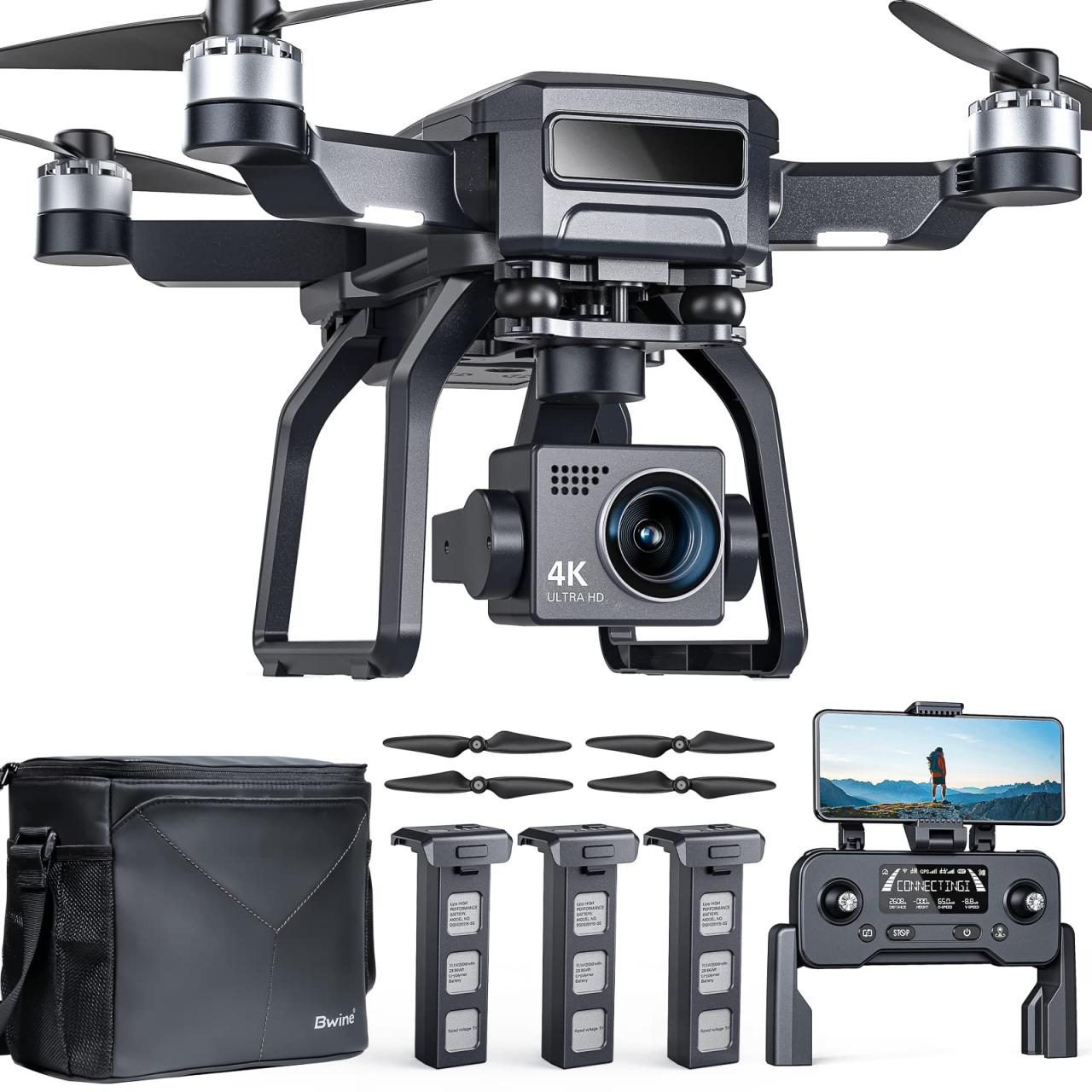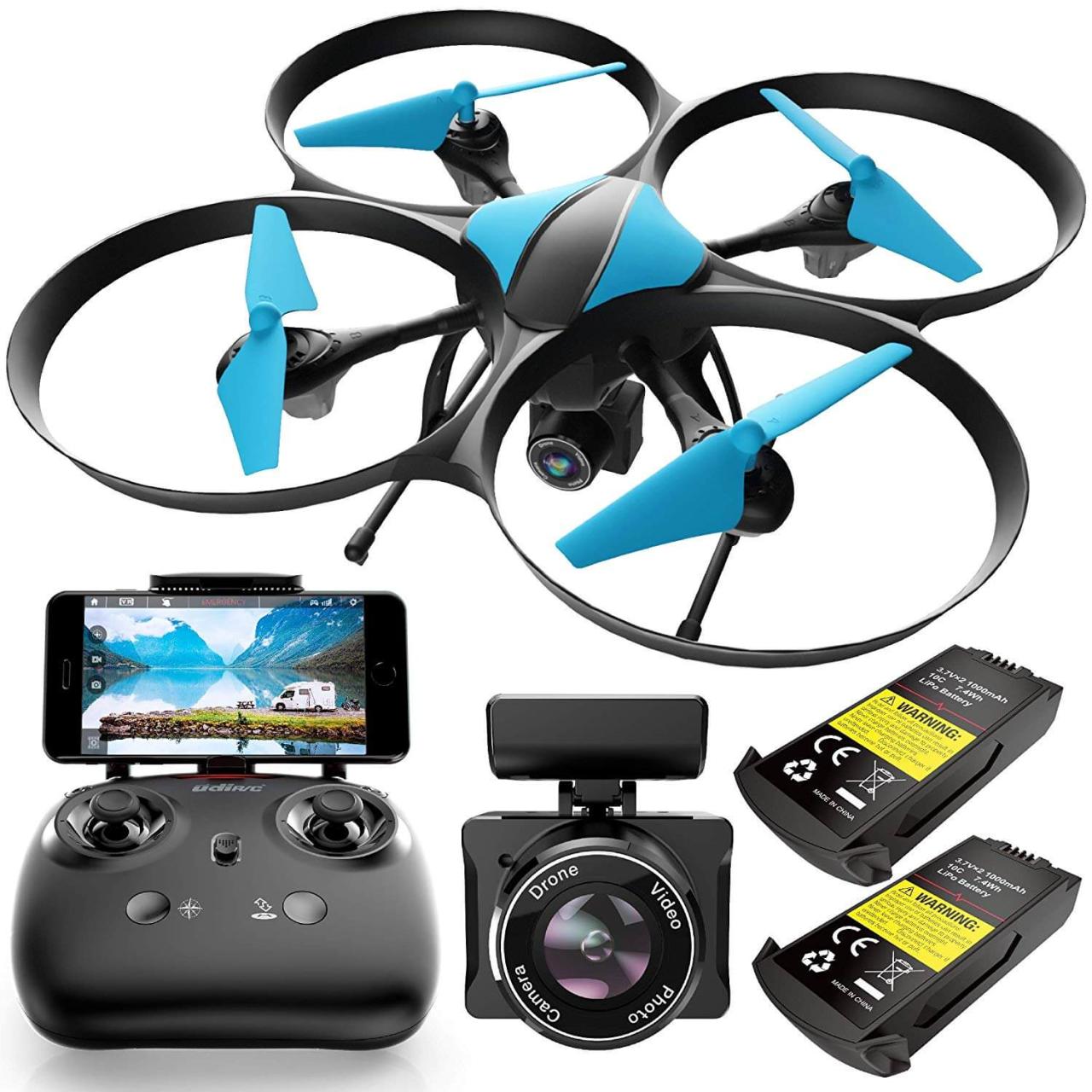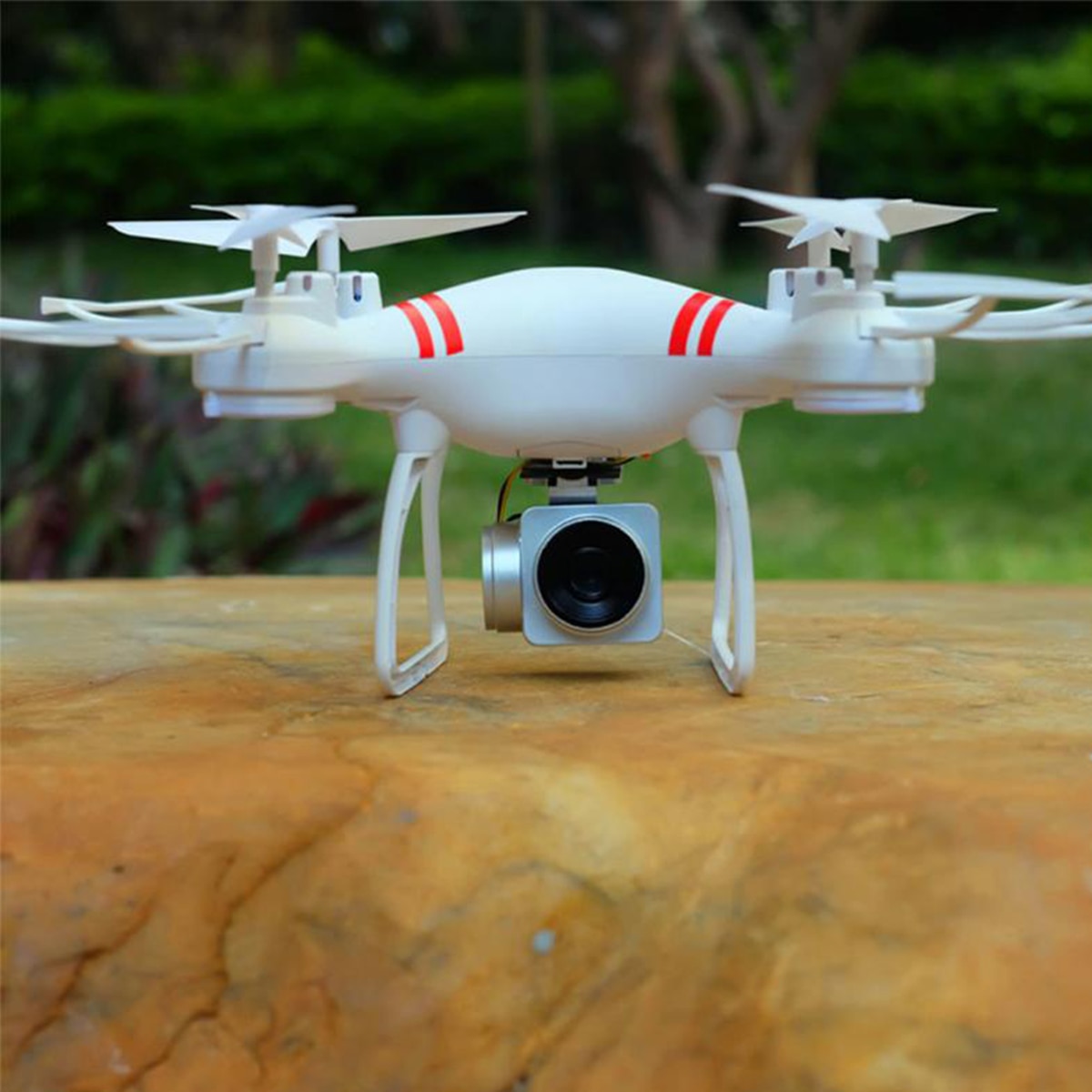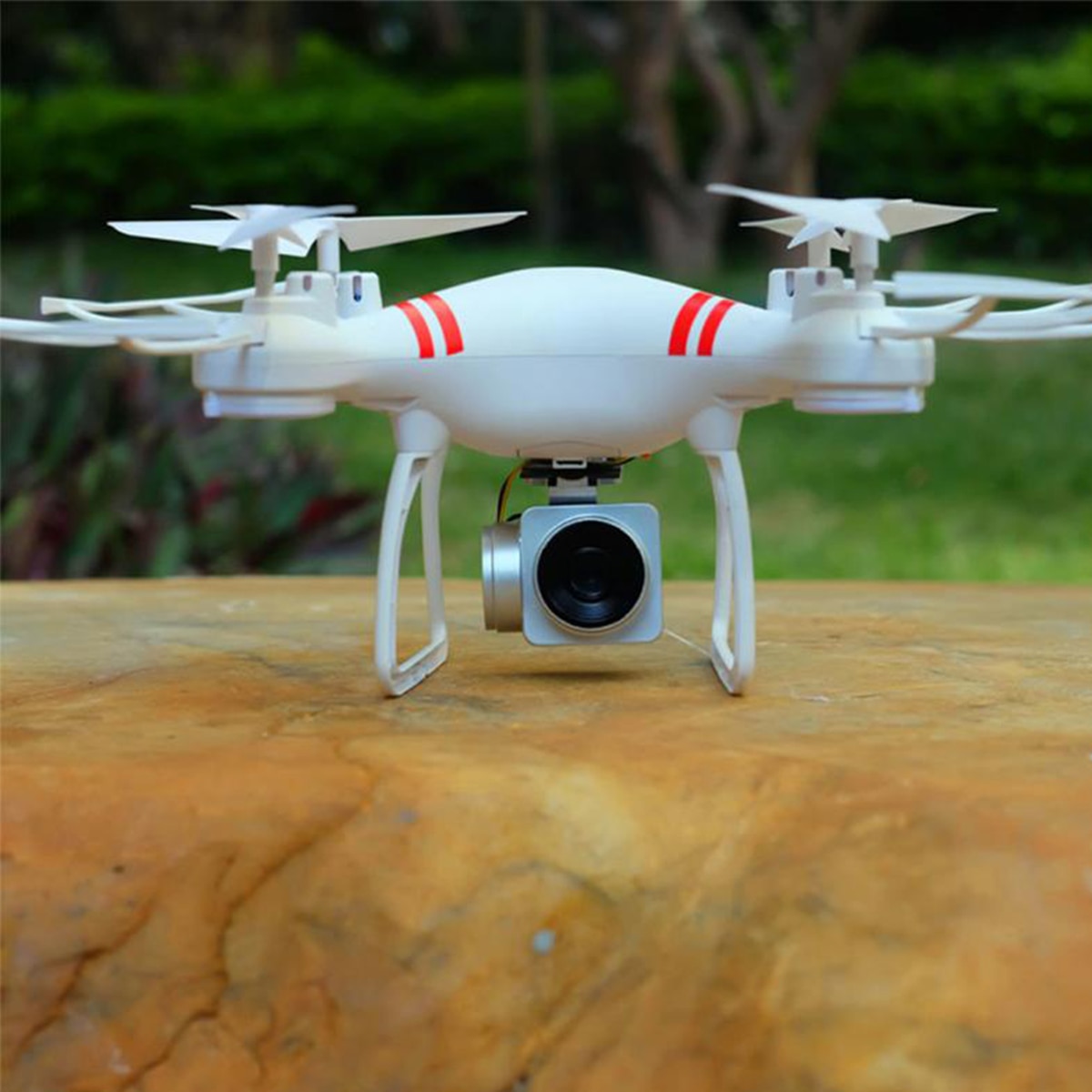Drone with camera technology has revolutionized numerous industries, offering unprecedented perspectives and capabilities. From breathtaking aerial photography and videography to precision agriculture and infrastructure inspection, the applications are vast and constantly evolving. This guide delves into the intricacies of drone cameras, exploring their diverse types, features, applications, and the crucial safety and legal considerations surrounding their operation.
We will examine various drone models, comparing their camera specifications, image processing techniques, and cost-effectiveness. We’ll also discuss essential accessories, maintenance procedures, and provide a framework for choosing the ideal drone with camera to suit your specific needs and budget. Whether you’re a professional photographer, a filmmaker, or simply an enthusiast, this comprehensive guide will equip you with the knowledge to navigate the exciting world of drone technology.
Drones with cameras offer incredible versatility for capturing stunning aerial footage. For those seeking a high-quality option in Canada, consider the capabilities of the black falcon 4k drone canada ; its 4K resolution ensures sharp, detailed images. Ultimately, the choice of drone with camera depends on individual needs and budget, but the Black Falcon is certainly a strong contender in the market.
Types of Drones with Cameras
Drones with cameras are categorized based on several factors, primarily their camera capabilities. These capabilities influence the drone’s suitability for different applications, from casual photography to professional filmmaking and industrial inspection.
Drone Classifications Based on Camera Features
The primary differentiators in drone cameras are resolution, zoom capacity, and stabilization technology. Resolution dictates image clarity, zoom allows for varied perspectives, and stabilization ensures smooth footage, minimizing the effects of vibrations and wind.
| Type | Camera Resolution | Zoom Capability | Stabilization Technology |
|---|---|---|---|
| Hobbyist Drone | 1080p – 4K | 2x – 3x optical zoom, digital zoom available | 3-axis gimbal |
| Professional Filmmaking Drone | 4K – 8K | Up to 10x optical zoom, advanced digital zoom | 3-axis gimbal with advanced stabilization algorithms |
| Industrial Inspection Drone | High-resolution stills, often thermal imaging | Variable, depending on the sensor and lens | Robust stabilization for precise image capture |
| Compact Foldable Drone | 1080p – 4K | 2x – 5x total zoom | Electronic Image Stabilization (EIS) or 3-axis gimbal |
Advantages and Disadvantages of Drone Types
Each drone type offers a unique balance of capabilities and limitations. Consider the following when choosing a drone.
- Hobbyist Drones: Advantages include affordability and ease of use. Disadvantages include lower image quality compared to professional models and limited zoom capabilities.
- Professional Filmmaking Drones: Advantages include high-resolution video, advanced zoom, and exceptional stabilization. Disadvantages include higher cost and more complex operation.
- Industrial Inspection Drones: Advantages include specialized sensors for various tasks (thermal, multispectral). Disadvantages are often higher price and specialized training requirements.
- Compact Foldable Drones: Advantages include portability and convenience. Disadvantages may include slightly lower image quality and less robust stabilization compared to larger drones.
Drone Camera Features and Specifications
Understanding drone camera specifications is crucial for selecting the right model for your needs. Key features to consider include sensor size, aperture, field of view, and sensor type.
Camera Specifications
Sensor size significantly impacts image quality, with larger sensors generally capturing more light and producing better low-light performance. Aperture controls the amount of light entering the camera, influencing depth of field and exposure. Field of view determines the camera’s angle of vision, influencing the perspective of the captured image.
Comparison of Camera Sensor Types
CMOS (Complementary Metal-Oxide-Semiconductor) and CCD (Charge-Coupled Device) are the two primary sensor types used in drone cameras. CMOS sensors are more common due to their lower power consumption and faster readout speeds. CCD sensors generally offer better image quality, particularly in low-light conditions, but are less energy efficient.
| Sensor Size | Image Quality | Low-Light Performance | Examples |
|---|---|---|---|
| 1/2.3″ | Good | Average | Many entry-level drones |
| 1/1.7″ | Very Good | Good | Mid-range drones |
| 1″ | Excellent | Excellent | High-end professional drones |
Applications of Drones with Cameras
Drones with cameras are revolutionizing various industries, offering unique perspectives and capabilities.
Diverse Applications Across Industries
- Photography and Videography: Capturing stunning aerial shots for landscapes, real estate, and events. Examples include cinematic aerial footage for movies and commercials, or high-resolution images for architectural photography.
- Agriculture: Monitoring crop health, identifying areas needing attention, and optimizing irrigation and fertilization. Examples include precision spraying of pesticides and detailed analysis of crop growth using multispectral imaging.
- Surveillance and Security: Monitoring large areas, detecting intruders, and providing real-time situational awareness. Examples include border patrol, infrastructure inspection, and search and rescue operations.
- Infrastructure Inspection: Inspecting bridges, power lines, and other infrastructure for damage or wear. Examples include detecting cracks in bridges or identifying damaged power lines before they cause outages.
- Delivery and Logistics: Delivering small packages and transporting goods in remote areas. Examples include medical supply delivery to remote hospitals or delivering packages to customers in hard-to-reach locations.
Future Potential, Drone with camera
Future applications may include advanced mapping and 3D modeling, autonomous drone swarms for large-scale inspections, and integration with AI for automated data analysis.
Drone Camera Image and Video Processing
Post-processing significantly enhances the quality of drone footage. Software and algorithms play a vital role in improving the final output.
Image and Video Enhancement Techniques
Techniques such as noise reduction, sharpening, color correction, and stabilization are commonly used. Software like Adobe Premiere Pro and DaVinci Resolve offer advanced tools for color grading, stabilization, and other effects.
Role of Software and Algorithms
Algorithms are used for tasks like object recognition, image stitching (for creating panoramas), and advanced stabilization. Software interfaces provide intuitive controls for these processes.
Impact of Processing Techniques
Proper processing can significantly improve the visual appeal and clarity of drone footage, enhancing details and creating a more professional look. Conversely, improper processing can degrade image quality.
Safety and Legal Considerations

Safe and legal drone operation is paramount. Understanding regulations and safety protocols is essential.
Safety Precautions
- Always check weather conditions before flying.
- Maintain visual line of sight with the drone.
- Avoid flying near airports or other restricted areas.
- Respect privacy and avoid flying over private property without permission.
Legal Regulations and Restrictions
Regulations vary by region. Check local laws and obtain necessary permits before flying. Familiarize yourself with airspace restrictions and no-fly zones.
Best Practices for Responsible Drone Operation
- Register your drone with the relevant authorities.
- Fly responsibly and avoid disturbing others.
- Keep your drone in good working condition.
- Be aware of your surroundings and potential hazards.
Drone Camera Accessories and Upgrades
Various accessories and upgrades can enhance drone camera performance.
Accessories to Improve Functionality
- ND Filters: Reduce light entering the camera, allowing for wider apertures and slower shutter speeds in bright conditions.
- Polarizing Filters: Reduce glare and reflections, enhancing color saturation and contrast.
- Gimbal Protectors: Protect the gimbal from damage during crashes or impacts.
Advantages and Disadvantages of Upgrades
Upgrading can improve image quality, zoom range, and other features. However, upgrades can be costly and may require technical expertise.
Common Upgrades and Their Impact

- Higher-Resolution Camera: Improves image detail and clarity.
- Improved Gimbal: Enhances image stabilization.
- Larger Sensor: Improves low-light performance and dynamic range.
Cost and Maintenance of Drones with Cameras: Drone With Camera
The cost of drones with cameras varies significantly depending on features and brand.
Cost Breakdown

| Cost Factor | Approximate Cost |
|---|---|
| Drone Purchase | $500 – $5000+ |
| Accessories | $50 – $500+ |
| Maintenance and Repairs | Variable, depending on usage |
Factors Influencing Cost
Brand reputation, camera specifications, features (like obstacle avoidance), and included accessories all impact the overall cost.
Regular Maintenance Procedures
- Inspect propellers for damage before each flight.
- Clean the camera lens regularly.
- Check battery levels and charge batteries properly.
- Store the drone in a dry, safe place.
Choosing the Right Drone with Camera
Selecting the right drone depends on individual needs and budget.
Drones equipped with cameras offer a versatile platform for various applications, from aerial photography to surveillance. The capabilities of these devices are constantly evolving, as seen in the development of more sophisticated models like the shahed drone , which highlights advancements in both technology and potential military uses. Ultimately, the integration of advanced camera technology in drones continues to expand their utility across diverse sectors.
Guide for Drone Selection
Consider factors such as intended use (photography, videography, inspection), desired image quality, budget, and required features (like obstacle avoidance or GPS).
Criteria for Evaluating Drones
Compare specifications such as camera resolution, zoom capabilities, stabilization technology, flight time, and ease of use.
Decision-Making Flowchart
A flowchart would visually guide users through a series of questions to narrow down their choices based on their needs and priorities. For example, the first question could be: “What is your primary use case for the drone?” The answer would then lead to further questions focusing on specific features relevant to that use case.
Ultimately, the selection of a drone with camera hinges on a careful consideration of individual needs, budget, and intended applications. Understanding the nuances of camera specifications, image processing, safety regulations, and maintenance practices is paramount for responsible and effective drone operation. By thoughtfully weighing these factors, users can harness the immense potential of drone technology, capturing stunning visuals and contributing to advancements across diverse sectors.
The future of drone technology promises even more sophisticated capabilities, further expanding the possibilities for both professional and recreational use.
FAQ Insights
What is the flight time of a typical drone with a camera?
Flight time varies significantly depending on the drone model, battery size, and environmental conditions. Expect anywhere from 15 to 45 minutes per battery charge.
How do I store my drone and camera properly?
Store your drone in a cool, dry place away from direct sunlight and extreme temperatures. Keep the camera lens clean and protected from dust and moisture.
What is the best way to clean a drone camera lens?
Use a microfiber cloth and lens cleaning solution specifically designed for camera lenses. Avoid harsh chemicals or abrasive materials.
Are there any weight restrictions for drones with cameras?
Yes, weight restrictions vary depending on local regulations and the type of airspace you’re operating in. Check with your local aviation authority for specific rules.
